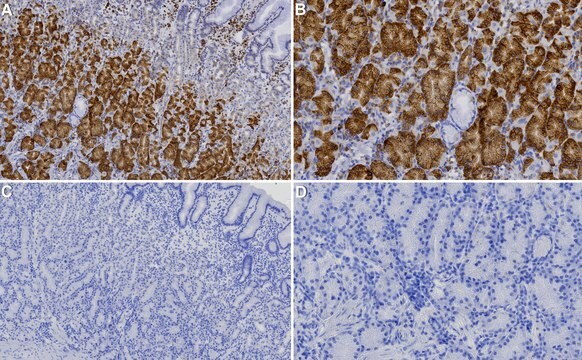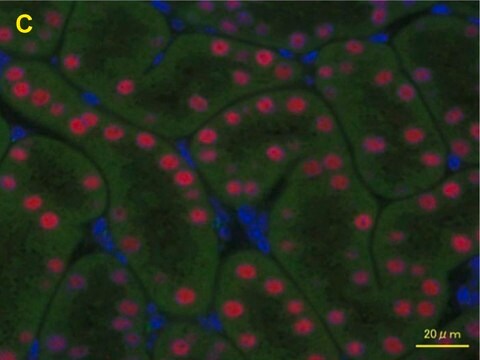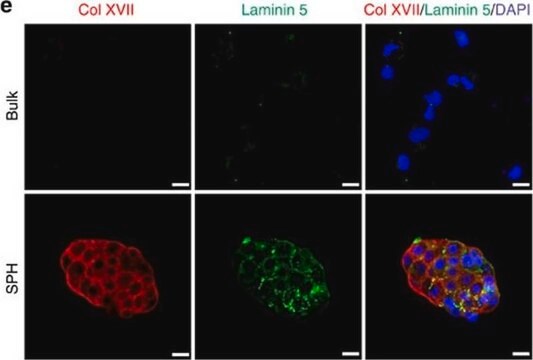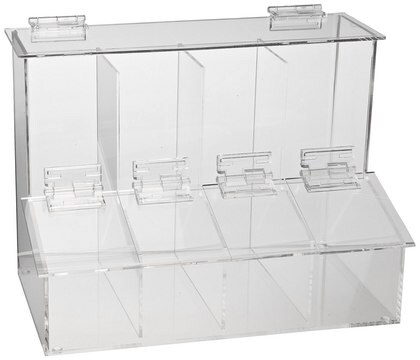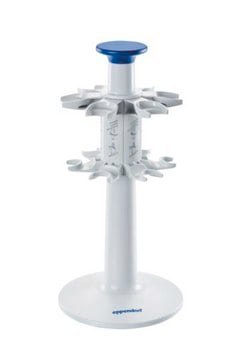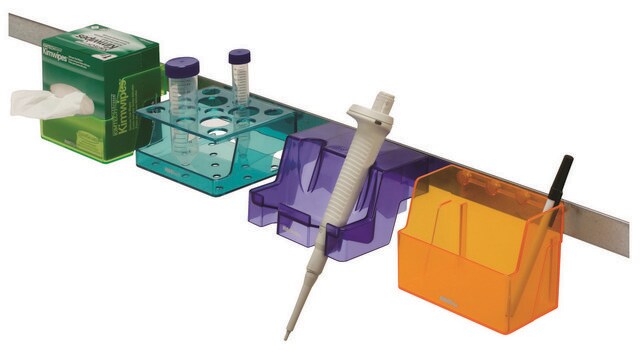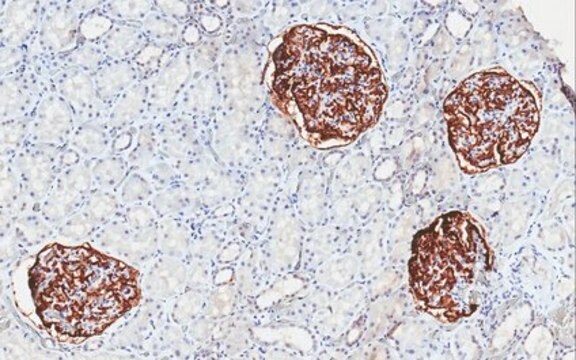About This Item
Polecane produkty
pochodzenie biologiczne
mouse
Poziom jakości
białko sprzężone
unconjugated
forma przeciwciała
purified antibody
rodzaj przeciwciała
primary antibodies
klon
P2H, monoclonal
masa cząsteczkowa
calculated mol wt 130.98 kDa
reaktywność gatunkowa
mouse, human
opakowanie
antibody small pack of 100 μL
metody
ELISA: suitable
immunocytochemistry: suitable
immunohistochemistry (formalin-fixed, paraffin-embedded sections): suitable
western blot: suitable
izotyp
IgG2a
numer dostępu UniProt
Warunki transportu
dry ice
temp. przechowywania
2-8°C
docelowa modyfikacja potranslacyjna
unmodified
informacje o genach
human ... LAMC2(3918)
Opis ogólny
Specyficzność
Immunogen
Zastosowanie
Ocena immunocytochemiczna w komórkach A431.
Analiza immunocytochemiczna: Rozcieńczenie 1:500 tego przeciwciała wykryło podjednostkę g2 lamininy-5 (LAMC2) w komórkach A431.
Testowane zastosowania
Analiza Western Blotting: 1 μg/ml z reprezentatywnej partii wykryło LAMC2 w lizatach komórek raka płaskonabłonkowego płuc (dzięki uprzejmości Kaoru Miyazaki, Ph.D., KIhara Institute for Biological Research, Yokohama City University, Japonia).
Analiza Western Blotting: Reprezentatywna partia wykryła LAMC2 w aplikacjach Western Blotting (Miyazaki, K., et. al. (2016). Cancer Sci. 107(12):1909-1918).
Analiza immunohistochemiczna (parafina): 10 μg/mL z reprezentatywnej partii wykryło LAMC2 w normalnej ludzkiej skórze, raku skóry, normalnej piersi i tkankach gruczolakoraka piersi (dzięki uprzejmości Kaoru Miyazaki, Ph.D., KIhara Institute for Biological Research, Yokohama City University, Japonia).
Analiza ELISA: 5 μg/mL z reprezentatywnej partii wykryło LAMC2 w Lm-gamma2pf i Lm-gamma2 w pożywce Lm332 z komórek HEK293 z ekspresją Lm332 (dzięki uprzejmości Kaoru Miyazaki, Ph.D., KIhara Institute for Biological Research, Yokohama City University, Japonia).
Analiza immunocytochemiczna: Reprezentatywna partia wykryła LAMC2 w zastosowaniach immunocytochemicznych (Miyazaki, K., et. al. (2016). Cancer Sci. 107(12):1909-1918).
Zastosowania immunohistochemiczne: Reprezentatywna partia wykryła LAMC2 w zastosowaniach immunohistochemicznych raka płaskonabłonkowego płuc i gruczolakoraka płuc (dzięki uprzejmości Kaoru Miyazaki, Ph.D., KIhara Institute for Biological Research, Yokohama City University, Japonia).
Uwaga: Rzeczywiste optymalne rozcieńczenia robocze muszą być określone przez użytkownika końcowego jako próbki, a warunki eksperymentalne mogą się różnić w zależności od użytkownika końcowego.
Postać fizyczna
Przechowywanie i stabilność
Inne uwagi
Oświadczenie o zrzeczeniu się odpowiedzialności
Nie możesz znaleźć właściwego produktu?
Wypróbuj nasz Narzędzie selektora produktów.
Kod klasy składowania
12 - Non Combustible Liquids
Klasa zagrożenia wodnego (WGK)
WGK 1
Temperatura zapłonu (°F)
Not applicable
Temperatura zapłonu (°C)
Not applicable
Certyfikaty analizy (CoA)
Poszukaj Certyfikaty analizy (CoA), wpisując numer partii/serii produktów. Numery serii i partii można znaleźć na etykiecie produktu po słowach „seria” lub „partia”.
Masz już ten produkt?
Dokumenty związane z niedawno zakupionymi produktami zostały zamieszczone w Bibliotece dokumentów.
Nasz zespół naukowców ma doświadczenie we wszystkich obszarach badań, w tym w naukach przyrodniczych, materiałoznawstwie, syntezie chemicznej, chromatografii, analityce i wielu innych dziedzinach.
Skontaktuj się z zespołem ds. pomocy technicznej
